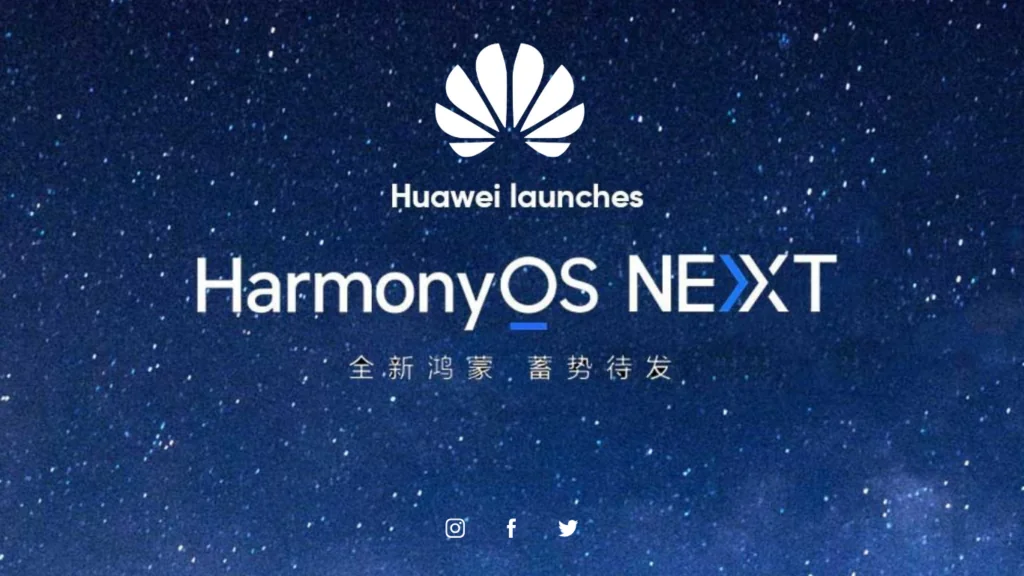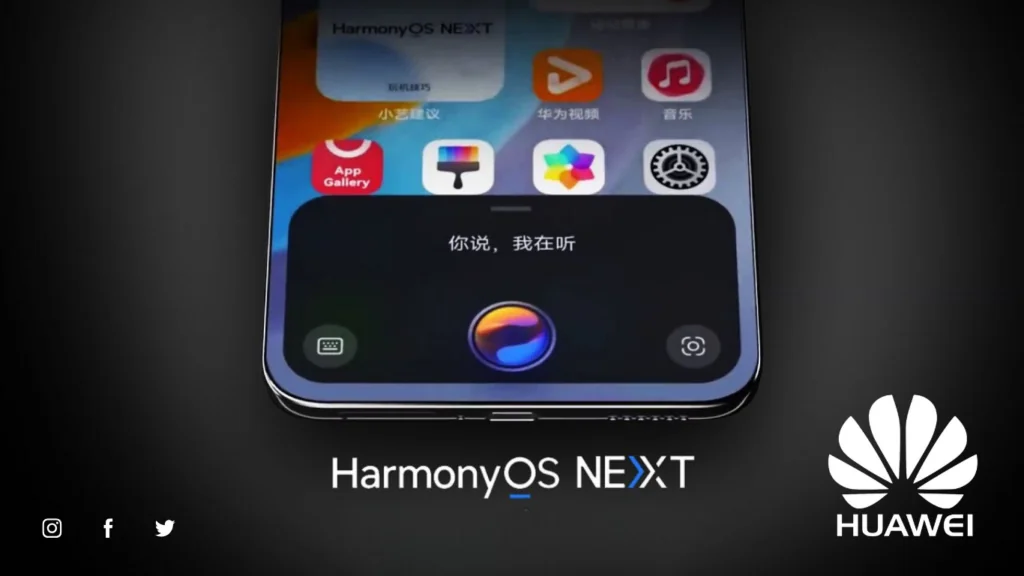The Chinese tech giant Huawei has announced that HarmonyOS will replace Android across its smartphone lineup. This revolutionary decision makes Huawei the first major manufacturer to completely break away from Android’s market dominance.
Recent comparisons between HarmonyOS and Android have revealed significant differences and answered the common question: “Does Huawei use Android anymore?” Huawei’s new operating system shows a complete departure from its Android foundation. This fundamental change will affect users, developers, and the global smartphone market. HarmonyOS could revolutionize the mobile operating system world with its innovative features and capabilities.
HarmonyOS Next Technical Evolution
HarmonyOS Next’s technical foundation represents a complete architectural overhaul that distinguishes it from traditional mobile operating systems. The system operates on a self-developed microkernel architecture and eliminates all Android dependencies 1.
Microkernel Architecture Benefits
HarmonyOS’s microkernel design boosts security through formal verification methods in the Trusted Execution Environment (TEE). The microkernel’s code base is one-thousandth the size of the Linux kernel, which substantially reduces potential attack surfaces 2. This simplified architecture manages only the core functions like thread scheduling and IPC. Other system services move to user mode to improve security and efficiency.
Performance Improvements vs Android
HarmonyOS Next demonstrates impressive performance metrics compared to its predecessors. The system’s Deterministic Latency Engine achieves 30% smoother performance and 20% less power consumption. Battery life extends by 56 minutes 3. The system’s Inter Process Communication (IPC) performs five times more efficiently than existing systems 2.
Native AI Capabilities
HarmonyOS Next features detailed AI capabilities through Harmony Intelligence that work across all system layers 4. The system offers these key AI features:
- Automatic speech recognition with over 90% accuracy (95% for local recognition)
- Context-aware features that adapt to user priorities
- Advanced text recognition for printed materials
- Intelligent device interactions powered by PanGu 5.0 LLM 1
The AI framework combines HiAI Foundation Kit, MindSpore Lite Kit, and Neural Network Runtime Kit. These optimize performance and reduce power consumption on devices with Kirin chips 1.
App Ecosystem Development
HarmonyOS’s app ecosystem shows impressive progress in building a thriving app store. The platform now supports over 10,000 applications and meets 99.9% of consumers’ usage time needs according to Huawei’s claims 5.

Current App Availability Status
Native app development shows strong growth with more than 4,000 HarmonyOS native apps confirmed for migration 6. Major services like JD.com, Bilibili, KFC, and McDonald’s have become part of the ecosystem 7. The platform has captured 17% market share in China’s mobile operating system market, pushing ahead of iOS at 16% 8.
Developer Incentives and Support
Huawei has made a bold investment of $1 billion to promote HarmonyOS native app development 7. The company’s complete support package has:
- Monthly training programs for 100,000+ developers 9
- Merchant service agreements for paid applications
- Dedicated support for smart watch app monetization 10
Migration Tools for Android Apps
Huawei provides reliable migration options for developers. The platform offers two main approaches for Android developers: direct G2H (Google to Huawei) conversion and G+H hybrid implementation 11. Developers can use HMS ToolKit to optimize migration. API documentation and compatibility layers ensure smooth transition of core functionalities 11.
User Impact and Experience
HarmonyOS Next has transformed its user interface. The system now features what Huawei calls “Harmonious esthetics” with bright system colors and reflective spatial elements 1.
Interface Changes and New Features
HarmonyOS Next comes with fresh features that boost user interaction. Users can preview folder contents without opening them. The system also supports “snippets” – iOS-style pop-up windows that give quick access to app functions 1. HarmonyOS Sans font runs throughout the system and makes text easier to read 1.
Data Migration Process
Phone Clone’s data transfer speed stands out at 8 GB per minute 12. Users can:
- Move contacts, photos, and messages wirelessly
- Connect devices with secure encryption
- Work with Android and iOS devices 12
Compatibility with Existing Services
HarmonyOS Next shines in device connectivity through its “Super Device” feature 13. The system runs 30% more smoothly and uses 20% less power during software communication 14. The Service Collaboration Kit (SCK) creates smooth cross-device interaction. Tablets and laptops can use smartphone features when both devices share the same Huawei account 1.
Global Market Strategy
Our latest analysis of HarmonyOS reveals Huawei’s technical capabilities and ecosystem, along with their bold global market strategy. The company has laid out a careful yet confident plan to expand internationally.
Regional Rollout Plans
Huawei has chosen a smart “China-first” approach for its global expansion. The company now invests 7 billion yuan (approximately $966 million) to boost developer participation and help the ecosystem grow 15. Research shows that Huawei’s innovation centers exist in major cities, and they plan to build 10 additional centers in different regions 16. Their expansion strategy includes:
- Building a strong ecosystem in China first
- Expanding one country at a time
- Supporting local app developers in each region
Partnership Developments
The partnership landscape shows remarkable progress. More than 70 organizations now actively contribute to the OpenHarmony ecosystem 16. The platform has got support from many sectors:
- Financial institutions
- Educational organizations
- Aerospace companies
- Industrial partners
Market Share Projections
Market analysis shows impressive growth curves. HarmonyOS has secured 4% of the global market share in Q4 2023 17. It holds 16% market share in China, making it the world’s third-largest mobile operating system 17. Growth looks promising due to several factors:
- Strong performance in China’s smartphone market with 17% share in recent quarters 15
- HarmonyOS now runs on over 800 million devices worldwide 15
- A growing smartwatch presence that could reach 61% market share in China by 2024 18
Huawei’s collaboration with the Eclipse Foundation in Brussels to develop Oniro, a HarmonyOS-based system for mobile and IoT devices, shows their serious international ambitions 16.
Conclusion
HarmonyOS Next proves mobile operating system independence works. Our largest study shows how Huawei’s bold move away from Android created remarkable results. Their microkernel architecture provides improved security and performance. The growing ecosystem now supports over 10,000 applications.
The new interface design makes user experience better. Data moves faster between devices with uninterrupted cross-device connectivity. HarmonyOS’s market performance impresses everyone – it has captured 4% global market share and runs on more than 800 million devices worldwide.
This transformation in the mobile operating system world shows something important. Huawei’s success demonstrates that new platforms can thrive when built on solid technical foundations with proper ecosystem support. HarmonyOS has become a serious global mobile market contender through careful expansion, major developer investments and growing mutually beneficial alliances.
FAQs
- What is HarmonyOS and how does it differ from Android? HarmonyOS is Huawei’s self-developed operating system that has now completely replaced Android on their new smartphones. It features a microkernel architecture, which offers enhanced security and performance improvements compared to Android. HarmonyOS Next, the latest version, is built from the ground up without any Android dependencies.
- Why did Huawei stop using Android? Huawei’s shift away from Android was primarily due to U.S. trade restrictions that prevented the company from using Google’s services. In response, Huawei developed HarmonyOS to ensure the continuity of their smartphone business and to create an independent ecosystem.
- What are the key features of HarmonyOS Next? HarmonyOS Next offers several notable features, including a microkernel architecture for improved security, better performance with 30% smoother operation and 20% less power consumption, native AI capabilities, and seamless cross-device connectivity through its “Super Device” functionality.
- How does the app ecosystem for HarmonyOS compare to Android? HarmonyOS’s app ecosystem is growing rapidly, with over 10,000 applications available. Huawei claims this meets 99.9% of consumers’ usage time needs. The company is investing heavily in developer support and providing tools for easy migration of Android apps to HarmonyOS.
- Can HarmonyOS devices run Android apps? While HarmonyOS Next is designed to be independent of Android, Huawei provides migration tools for developers to convert their Android apps to HarmonyOS. This includes direct G2H (Google to Huawei) conversion and G+H hybrid implementation options.
- How is HarmonyOS performing in the global market? HarmonyOS has captured 4% of the global market share and has achieved 16% market share in China, making it the third-largest mobile operating system globally. Over 800 million devices are now running HarmonyOS worldwide.
- What changes will users experience when switching to HarmonyOS? Users will notice a new interface design with “Harmonious esthetics,” featuring vivid system colors and reflective spatial elements. The system also introduces new features like intuitive folder systems, “snippets” for quick app access, and improved cross-device connectivity.
- How does data migration work when switching to a HarmonyOS device? HarmonyOS offers a data migration tool called Phone Clone, which can transfer data at speeds of up to 8 GB per minute. It supports wireless transfer of contacts, photos, and messages, and is compatible with both Android and iOS devices.
- What is Huawei’s strategy for expanding HarmonyOS globally? Huawei is adopting a “China-first” approach before expanding globally. The company is investing heavily in developer support, establishing innovation centers in key cities, and gradually rolling out country-by-country. They’re also leveraging partnerships with over 70 organizations to contribute to the OpenHarmony ecosystem.
- How does HarmonyOS impact battery life and performance? According to Huawei, HarmonyOS Next delivers 30% smoother performance and 20% less power consumption compared to previous versions, extending battery life by approximately 56 minutes. The system’s enhanced Inter Process Communication (IPC) system also performs up to five times more efficiently than existing systems.


